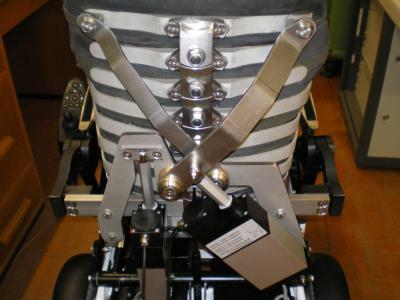Today's office workplaces are designed to be as ergonomic as possible. Even so, after hours of hunching over a desk it does you good to stand up, stretch your legs and relax your back. Spending a whole day in practically the same cramped position is a very tiring proposition.

The backrest of the seat shell (seen from behind) is constructed of ribs and joints which simulate the structure of a human torso.
(Photo Credit: Empa)